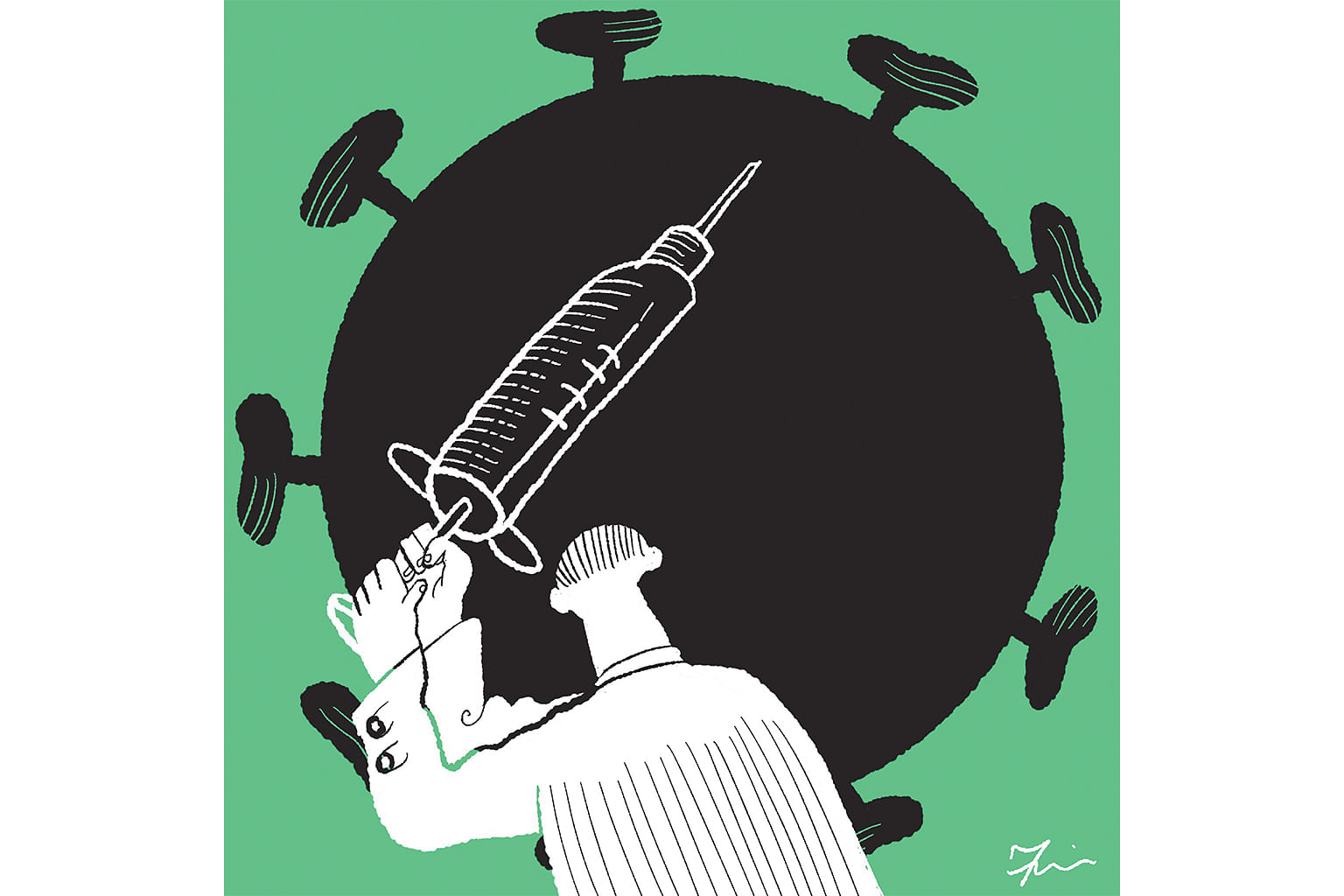I stood beside my patient in my sweat-soaked personal protective equipment (PPE). It was a sweltering 35 deg C in the shade and he was attempting to do a standing calf stretch while I supervised him.
"Hold for 20 seconds, do three sets each leg," I told him. He nodded in acknowledgement, beads of sweat rolling down his forehead and soaking his cloth mask.
He had insertional Achilles tendinosis, a chronic degeneration of the Achilles tendon that attaches to the heel bone. It's a common condition that sports physicians see.
However, this was not my usual clinic. I am on the front lines of Singapore's war against Covid-19. My battlefield is a makeshift tentage on a basketball court, within a migrant worker dormitory. The worker to whom I had taught calf stretches also had Covid-19. That was in May.
In January this year, I was looking forward to the deliveries of a new focused-shockwave device and a platelet-rich plasma system.
Outside of the hospital, I was delighted to be assigned a role at the upcoming Tokyo Paralympic Games. It was a good start to 2020.
However, Singapore saw its first imported case of Covid-19 on Jan 23. A fortnight later, there were signs of community spread and the national alert level was raised.
The hospital ceased non-essential services to stem the virus' spread. Sports medicine clinics were closed and I was seconded to the orthopaedic service of another hospital.
I ran general orthopaedic clinics, treating wounds and fractures. I saw inpatient referrals and assisted with surgery.
It was mandatory to wear a surgical mask at all times, which was important not only for protecting myself, but also for hiding my look of apprehension in front of patients.
Being non-surgically trained, I was out of my depth. I was managing patella fractures instead of patellofemoral pain; wielding a scalpel instead of an ultrasound probe over the knee; aiming a drill bit instead of a shock-wave applicator at a patient's tibia.
Singapore has 323,000 migrant workers, many of whom hail from Bangladesh and India. They do work vital to the economy that most locals are unwilling to take up, for example, construction and sanitation.

They live in privately run dormitories all over the island state, in rooms cramped with as many as 12 men. Under such conditions, the coronavirus spreads like wildfire among them.
As of May 17, there were 28,038 cases of Covid-19 and more than 90 per cent were migrant workers.
When the Government took over dormitory operations to halt the spread, public hospitals were tasked to provide medical support in three areas:
•Manage Covid-19 cases onsite to prevent hospitals from becoming overwhelmed.
•Carry out mass swabbing to identify and isolate positive contacts; and
•Attend to the migrant workers' primary care needs.
My hospital was assigned to support three dormitories. I volunteered for the work as I believe that I can contribute more in the dormitories than in the orthopaedic service. My colleague, a spine surgeon, also volunteered, despite having to re-learn how to use a stethoscope.
Thankfully, most of the infected workers were young and mildly symptomatic. They could be managed within their dormitory and did not require hospital care.
Still, many have read reports of mounting Covid-19 deaths worldwide and were very worried about succumbing to the illness.
Some were uncomfortable as they were isolated with others of a different ethnicity. They were initially given catered local food that was culturally unacceptable and unpalatable. Their rooms lacked basic amenities like toiletries and cleaning equipment.
Thus, medical consultations became an avenue for many to vent their frustrations. Policemen stood guard next to the medical post to protect us in case fights broke out. Thankfully, there were none.
Their first language was not English, which made it tough to build a rapport with them.
Furthermore, they could not see our PPE-covered faces. We thus relied on shoulder pats and smiling with our eyes to convey empathy.
We spent more than four hours in each shift, wearing full PPE under the sun. Sweat would leak from our sleeves and gloves, often dripping onto the workers as we auscultated them. I recall feeling light-headed at the end of one shift, my breaths rapid and shallow - clear signs of dehydration and heat exhaustion.
We eventually learnt to make full use of the opportunity to hydrate before our shift. We also got acclimatised to working in the heat.
We saw the workers receive a deluge of donations from good Samaritans. Simple gifts like sachets of 3-in-1 coffee powder went a long way in building rapport and boosting morale. There was also an improvement in the quality of catered food, which helped greatly.
I spent more than a month at the dormitory and, while I was thankful for the chance to help my country fight the coronavirus war, I did worry about losing my clinical skills. This is no longer an issue as I have since returned to running my sports medicine clinics.
• Dr Wang Mingchang is a sports and exercise medicine physician at the National University Hospital Sports Centre and an associate consultant at Alexandra Hospital's Chronic Programme.
• A version of the article first appeared as a blog post in the British Journal of Sports Medicine.
